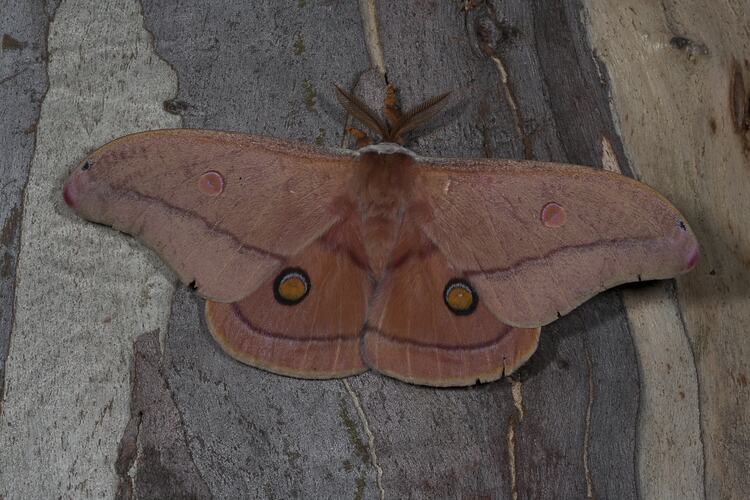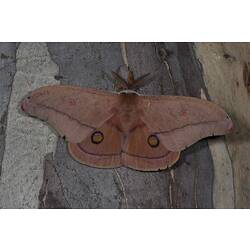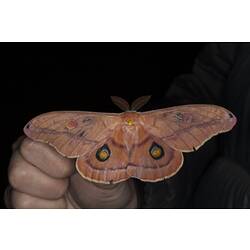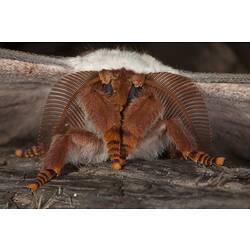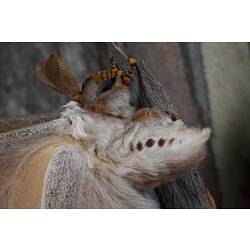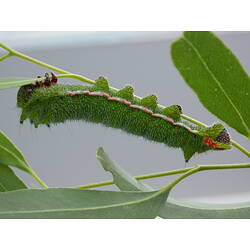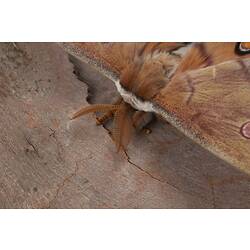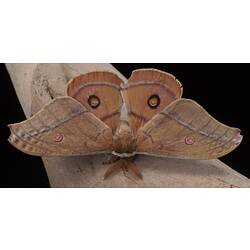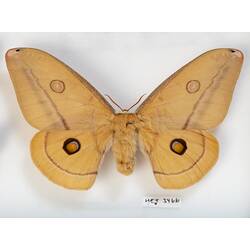General Description
Forewings are brownish orange with pink wingtips and have a prominent central eyespot. Between the eyespot and the outer edge of the forewing there is a pale crosswise line. The line is well removed from the eyespot. The hindwings are smaller but similarly marked, though the eyespot is double the size and even more prominent. Males have feathery antennae. Females are larger than the males and have broader wings. Wingspan ranges from 11 cm to 18 cm. Caterpillars dark in early stage becoming green as they grow. This species can be separated from the similar, though smaller, Emperor Gum Moth where the crosswise line on the forewing usually just touches the eyespot.
Biology
The caterpillars of the Helena Gum Moth eat a variety of eucalypt species and they have also been recorded on Silver Birch. There are two generations each year in Victoria though some individuals have been known to remain in the cocoons for at least two years. This species was recently moved from the genus Opodiphthera to the genus Austrocaligula.
Distribution
Southern mainland Australia and Tasmania. In Victoria it is found wherever there are suitable eucalypts.
Habitat
The species is found in eucalypt forests and woodlands in both dry and wet country.
More Information
-
Animal Type
-
Animal SubType
-
Brief Id
A very large moth with brownish orange wings and prominent eyespots.
-
Colours
Brown, Orange
-
Maximum Size
18 cm
-
Habitats
-
Diet
Herbivore
-
Endemicity
-
Commercial
No
-
Conservation Statuses
CITES: Not listed, FFG Threatened List: Not listed, EPBC Act 1999: Not listed, IUCN Red List: Least Concern
-
Flight Start
October
-
Flight End
February
-
Taxon Name
-
Scientific Author
(White, 1843)
-
Common Name
Helena Gum-Moth
-
Kingdom
-
Phylum
-
Subphylum
-
Class
-
Order
-
Superfamily
-
Family
-
Subfamily
-
Genus
-
Species Name
helena
